Monthly Archive: December 2013
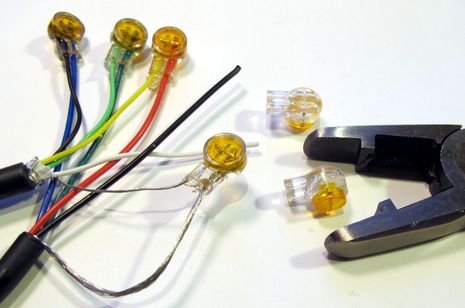 In October I promised to eventually discuss the 3M Scotchlok IDC connectors I used to tap into Gizmo’s engine gauge wires in order to install an Actisense EMU-1 Engine Monitoring Unit. Given that two experienced commenters already strongly dismissed these connectors for boat use, I did more research and testing. Tentative conclusion: While 3M does indeed state that Scotchloks like those tiny UY butt connectors above are meant only for 22-26 gauge solid copper conducter wires, they still seem like the fastest, surest way I’ve seen to splice the fine gauge stranded wires we often deal with afloat. Could it just be a mistake that’s kept a lot of useful Scotchlok models out of 3M’s limited marine line, or did I miss some major difference?
In October I promised to eventually discuss the 3M Scotchlok IDC connectors I used to tap into Gizmo’s engine gauge wires in order to install an Actisense EMU-1 Engine Monitoring Unit. Given that two experienced commenters already strongly dismissed these connectors for boat use, I did more research and testing. Tentative conclusion: While 3M does indeed state that Scotchloks like those tiny UY butt connectors above are meant only for 22-26 gauge solid copper conducter wires, they still seem like the fastest, surest way I’ve seen to splice the fine gauge stranded wires we often deal with afloat. Could it just be a mistake that’s kept a lot of useful Scotchlok models out of 3M’s limited marine line, or did I miss some major difference?
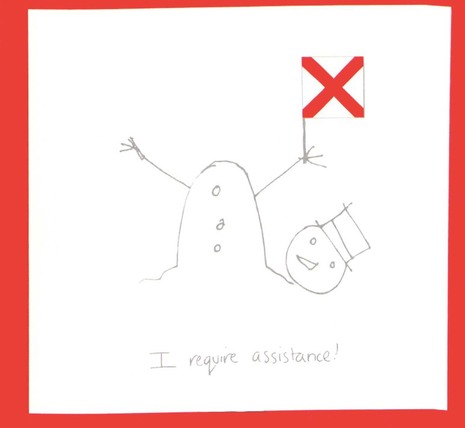 I love Nick Munro’s signal flag holiday cards — which you can see more of at the cheery Brit blog called slingthehook: the geek and the girl go to sea — but unfortunately they no longer seem available to benefit the Royal National Lifeboat Institution (though other Munro RNLI designs are). What follows is a highly eclectic collection of notable boating world cards that came my way recently, and I will point out a way you can help the U.S. Coast Guard as well…
I love Nick Munro’s signal flag holiday cards — which you can see more of at the cheery Brit blog called slingthehook: the geek and the girl go to sea — but unfortunately they no longer seem available to benefit the Royal National Lifeboat Institution (though other Munro RNLI designs are). What follows is a highly eclectic collection of notable boating world cards that came my way recently, and I will point out a way you can help the U.S. Coast Guard as well…
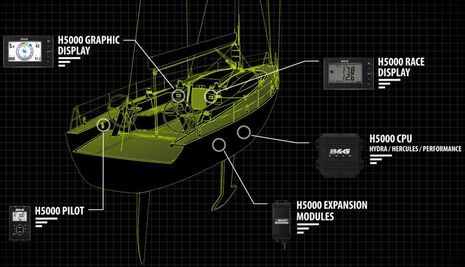 At the METS 2013 show in Amsterdam last month B&G unveiled their new H5000 range of sailing instruments and auto pilots. Unlike the Triton range which is meant for recreational and club racers the H5000 series is designed for high end cruisers and all levels of racers (from club to round-the-world), and replaces the H3000 series. B&G’s racing reputation stems from the capability of their systems to make corrections to the raw sensor values and deduce derived values at high rates. Cruising systems do basic smoothing of raw sensor values (wind, boat speed) and some computations (remember the Panbo discussion on calculating true wind?) but nothing else. The H5000 range can do much, much more. For instance all systems compensate the wind speed for heel and trim angle, there are advanced MOB features and the autopilots have special gust and high-wind response modes.
At the METS 2013 show in Amsterdam last month B&G unveiled their new H5000 range of sailing instruments and auto pilots. Unlike the Triton range which is meant for recreational and club racers the H5000 series is designed for high end cruisers and all levels of racers (from club to round-the-world), and replaces the H3000 series. B&G’s racing reputation stems from the capability of their systems to make corrections to the raw sensor values and deduce derived values at high rates. Cruising systems do basic smoothing of raw sensor values (wind, boat speed) and some computations (remember the Panbo discussion on calculating true wind?) but nothing else. The H5000 range can do much, much more. For instance all systems compensate the wind speed for heel and trim angle, there are advanced MOB features and the autopilots have special gust and high-wind response modes.
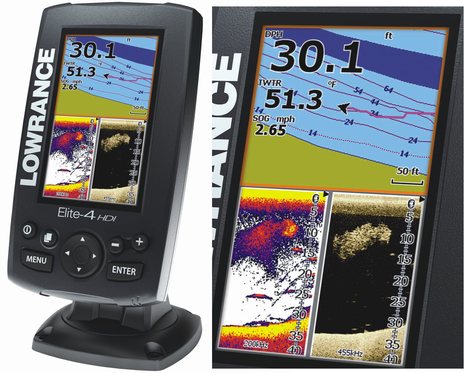 While I don’t normally follow the small-size displays closely, the new Lowrance Elite-4 HDI models announced yesterday seems to sport a remarkable ratio of dedicated marine electronics to cost. Their bright 4.3-inch LED-backlit screens, for instance, are substantially bigger than the Elite-4 models they replace, which were praised for their value. The plain Elite-4 HDI model, with a suggested $299 retail price, not only offers both regular fishfinding and high-frequency narrow beam downscanning — each with a shallow/deep frequency choice built into the included transom transducer — but also includes GPS, a bundle of lake and coastal cartography, and support for all sorts of chart card types…
While I don’t normally follow the small-size displays closely, the new Lowrance Elite-4 HDI models announced yesterday seems to sport a remarkable ratio of dedicated marine electronics to cost. Their bright 4.3-inch LED-backlit screens, for instance, are substantially bigger than the Elite-4 models they replace, which were praised for their value. The plain Elite-4 HDI model, with a suggested $299 retail price, not only offers both regular fishfinding and high-frequency narrow beam downscanning — each with a shallow/deep frequency choice built into the included transom transducer — but also includes GPS, a bundle of lake and coastal cartography, and support for all sorts of chart card types…
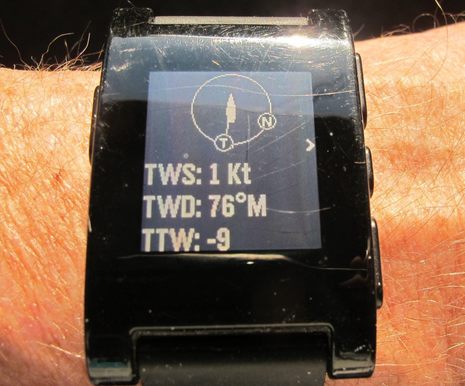 Getting True Wind to my wrist was actually easy and inexpensive, especially considering the complex path it traveled. The raw Apparent Wind readings originated in a Maretron WSO100 on Gizmo’s masthead and then went to a Simrad NSS8 MFD via NMEA 2000, where it was combined with other N2K data like COG, SOG, Heading and/or STW (depending on which True Wind ;-). The NSS8 then sent the data out using the NMEA 0183 tier of GoFree over WiFi, where it was captured by the SeaNav 2.0 charting app running on an iPad, which then passed it along to my Pebble watch over Bluetooth! It sounds crazy but when everything is working right, it’s as simple as turning on the boat system and opening SeaNav, which has many other features to appreciate…
Getting True Wind to my wrist was actually easy and inexpensive, especially considering the complex path it traveled. The raw Apparent Wind readings originated in a Maretron WSO100 on Gizmo’s masthead and then went to a Simrad NSS8 MFD via NMEA 2000, where it was combined with other N2K data like COG, SOG, Heading and/or STW (depending on which True Wind ;-). The NSS8 then sent the data out using the NMEA 0183 tier of GoFree over WiFi, where it was captured by the SeaNav 2.0 charting app running on an iPad, which then passed it along to my Pebble watch over Bluetooth! It sounds crazy but when everything is working right, it’s as simple as turning on the boat system and opening SeaNav, which has many other features to appreciate…
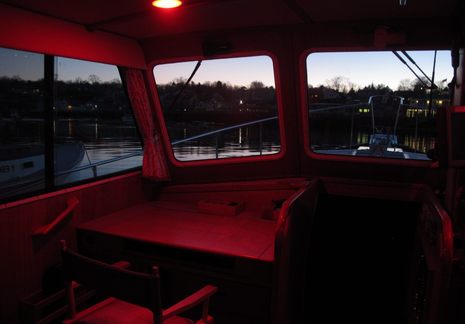 Once I’d bench tested “ChartTable21” in 2011 — a project Panbo readers helped design — I planned to soon post a followup entry showing and discussing the finished install. Well, now I can tell you that this sometimes invisible computer system not only works well but has survived more than three boat seasons without problems. The photo above, worth a click to see larger, shows how Gizmo’s original varnished cherry chart table can look nearly a lovely as designed and built. Sometimes you’d even see paper charts there, and obviously the sight lines through the big windows remain unobstructed. But when it’s time to “go to the office” or zone out on with Netflix, or do extensive nav planning, the scene transforms…
Once I’d bench tested “ChartTable21” in 2011 — a project Panbo readers helped design — I planned to soon post a followup entry showing and discussing the finished install. Well, now I can tell you that this sometimes invisible computer system not only works well but has survived more than three boat seasons without problems. The photo above, worth a click to see larger, shows how Gizmo’s original varnished cherry chart table can look nearly a lovely as designed and built. Sometimes you’d even see paper charts there, and obviously the sight lines through the big windows remain unobstructed. But when it’s time to “go to the office” or zone out on with Netflix, or do extensive nav planning, the scene transforms…
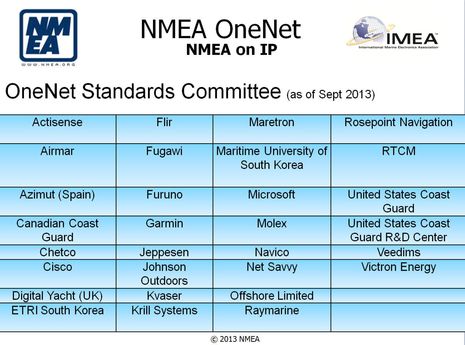 OneNet is the NMEA’s ongoing effort to create a subset of Ethernet and Internet Protocol (IP) standards for marine electronics. It won’t be fully released for two more years, but I liked what I heard (and could understand) in a September seminar delivered by NMEA Technical Director Steve Spitzer. When I first wrote about OneNet, for instance, some skeptical commenters could only envision it as a way for the major manufacturers to keep small developers out and profits up. But that seems paranoid when you consider the wide variety of organizations who are volunteering time and expertise to create OneNet…
OneNet is the NMEA’s ongoing effort to create a subset of Ethernet and Internet Protocol (IP) standards for marine electronics. It won’t be fully released for two more years, but I liked what I heard (and could understand) in a September seminar delivered by NMEA Technical Director Steve Spitzer. When I first wrote about OneNet, for instance, some skeptical commenters could only envision it as a way for the major manufacturers to keep small developers out and profits up. But that seems paranoid when you consider the wide variety of organizations who are volunteering time and expertise to create OneNet…
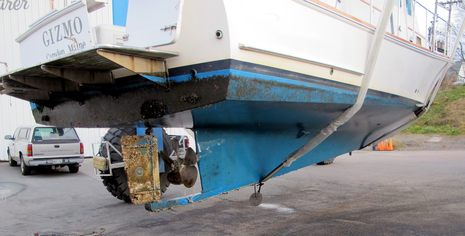 That’s a darn impressive photo, I think. When Gizmo was hauled on November 22, she hadn’t been out the water since May, 2012, and most of that copper-free Interlux Pacifica Plus bottom paint had already endured a seven-month test in 2011, as I wrote about then. So after more than three seasons, most of the running surfaces are still slick (and probably still self cleaning when the boat occaisionally goes fast). I did use the remains of the original two gallons to re-paint the belly band before the 2012 launch, Gizmo lay in cleansing Carolina fresh water from November that year thru May of this year, and I scrubbed the belly band from the tender last July. But notice how almost no barnacles or mussels — the critters that can really slow a boat down — adhered to the Pacifica Plus…
That’s a darn impressive photo, I think. When Gizmo was hauled on November 22, she hadn’t been out the water since May, 2012, and most of that copper-free Interlux Pacifica Plus bottom paint had already endured a seven-month test in 2011, as I wrote about then. So after more than three seasons, most of the running surfaces are still slick (and probably still self cleaning when the boat occaisionally goes fast). I did use the remains of the original two gallons to re-paint the belly band before the 2012 launch, Gizmo lay in cleansing Carolina fresh water from November that year thru May of this year, and I scrubbed the belly band from the tender last July. But notice how almost no barnacles or mussels — the critters that can really slow a boat down — adhered to the Pacifica Plus…
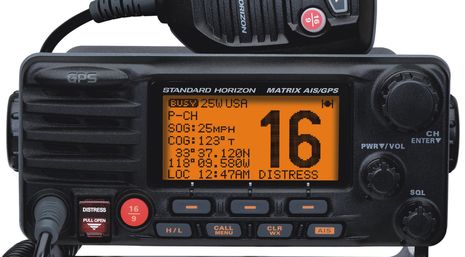 While it looks and works very much like the Matrix AIS GX2100 that caused quite a splash here in 2009, Standard Horizon’s just announced Matrix AIS/GPS GX2200 very usefully includes a built-in 66 channel GPS. And it still has the same $400 MAP (minimum advertised price) as the evolved Matrix AIS+ GX2150, which will now get a $350 MAP. Two years ago Standard introduced the Explorer GX1700 — the first fixed VHF with GPS built in, and still the only one (I think) — and while I haven’t tried one myself I think that front panel satellite antenna bump works pretty well even when installed under a fiberglass deck or top…
While it looks and works very much like the Matrix AIS GX2100 that caused quite a splash here in 2009, Standard Horizon’s just announced Matrix AIS/GPS GX2200 very usefully includes a built-in 66 channel GPS. And it still has the same $400 MAP (minimum advertised price) as the evolved Matrix AIS+ GX2150, which will now get a $350 MAP. Two years ago Standard introduced the Explorer GX1700 — the first fixed VHF with GPS built in, and still the only one (I think) — and while I haven’t tried one myself I think that front panel satellite antenna bump works pretty well even when installed under a fiberglass deck or top…
 In October I promised to eventually discuss the 3M Scotchlok IDC connectors I used to tap into Gizmo’s engine gauge wires in order to install an Actisense EMU-1 Engine Monitoring Unit. Given that two experienced commenters already strongly dismissed these connectors for boat use, I did more research and testing. Tentative conclusion: While 3M does indeed state that Scotchloks like those tiny UY butt connectors above are meant only for 22-26 gauge solid copper conducter wires, they still seem like the fastest, surest way I’ve seen to splice the fine gauge stranded wires we often deal with afloat. Could it just be a mistake that’s kept a lot of useful Scotchlok models out of 3M’s limited marine line, or did I miss some major difference?
In October I promised to eventually discuss the 3M Scotchlok IDC connectors I used to tap into Gizmo’s engine gauge wires in order to install an Actisense EMU-1 Engine Monitoring Unit. Given that two experienced commenters already strongly dismissed these connectors for boat use, I did more research and testing. Tentative conclusion: While 3M does indeed state that Scotchloks like those tiny UY butt connectors above are meant only for 22-26 gauge solid copper conducter wires, they still seem like the fastest, surest way I’ve seen to splice the fine gauge stranded wires we often deal with afloat. Could it just be a mistake that’s kept a lot of useful Scotchlok models out of 3M’s limited marine line, or did I miss some major difference?
















